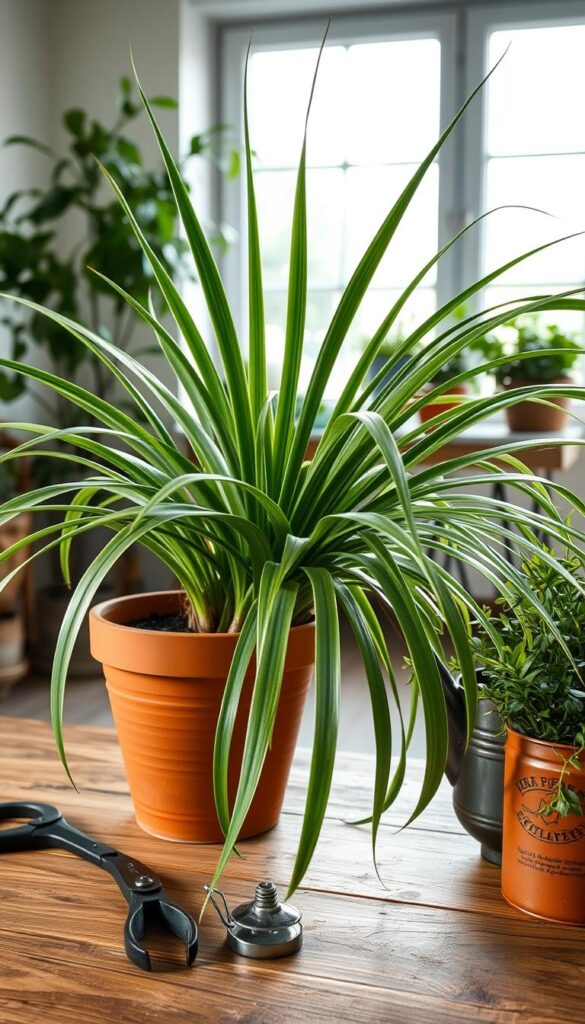Have you noticed your spider plant developing brown tips or leaves? You’re not alone. These popular houseplants are known for their hardiness, but even the most low-maintenance plants can run into trouble. I recently found myself in the same situation, wondering what was causing my once-thriving spider plant to show signs of distress.
Spider plants are beloved for their ability to grow well with minimal care. However, issues like overwatering, direct sunlight, or low humidity can quickly lead to brown leaves. It’s important to understand the specific needs of your plant to address the problem effectively.
In this article, we’ll explore the common reasons behind your spider plant turning brown and provide actionable tips to help it recover. Whether you’re a seasoned plant owner or just starting out, this guide will give you the insights you need to restore your plant’s health.
Understanding Why is My Spider Plant Turning Brown
Noticing those brown tips on your spider plant can be worrying. It’s natural to wonder what’s causing this change. Let’s explore the possible reasons together.
Recognizing the Early Signs
The first signs of stress in spider plants often appear as crispy edges or brown tips on the leaves. These signs are crucial indicators that something is amiss. Catching them early can prevent more severe damage.
Exploring Environmental and Seasonal Causes
Environmental factors play a significant role in your plant’s health. Direct sunlight, especially during winter when homes are heated, can cause leaves to turn brown. Additionally, humidity changes and the type of water used (like tap water containing fluoride) can affect your plant’s well-being.
Observations from My Own Experience
I’ve noticed that overwatering and poor drainage are common culprits. Using a well-draining pot and soil can help prevent root rot. It’s also important to consider the pot size and ensure it’s not too small for the plant.
| Common Causes | Signs | Solutions |
|---|---|---|
| Direct Sunlight | Brown tips, crispy leaves | Move to indirect light |
| Overwatering | Soft, mushy leaves | Check soil moisture |
| Fluoride in Water | Leaf discoloration | Use filtered water |
https://www.youtube.com/watch?v=wiJ_PFgCQ2c&pp=ygUJI3RyaW1saWx5
Proper Spider Plant Care Techniques for Recovery
When your spider plant starts showing brown tips, it’s time to take action. Recovery begins with understanding the right care techniques to restore your plant’s health.
Adjusting Light and Humidity Levels
Moving your plant to a spot with bright, indirect sunlight can make a big difference. Direct sunlight, especially in heated homes during winter, often causes leaves to turn brown. To boost humidity, consider using a humidity tray or misting the leaves regularly. These small changes can help your plant recover and prevent further damage.
Smart Watering Practices and Soil Management
Checking soil moisture is crucial. Water your spider plant only when the top inch of soil feels dry. Using filtered or rainwater avoids fluoride exposure, which can cause discoloration. Proper drainage is key to preventing root rot. Ensure your pot has good drainage holes to keep the soil from becoming soggy.
| Care Technique | Benefit | Action |
|---|---|---|
| Indirect Sunlight | Prevents brown tips | Move plant away from direct sun |
| Humidity Tray | Maintains moisture | Place pot on a damp pebble tray |
| Filtered Water | Reduces fluoride | Use rainwater or filtered water |

By adjusting light, humidity, and watering practices, you can help your spider plant recover. Proper care techniques will keep your plant healthy and thriving.
Troubleshooting Spider Plant Issues: From Root Rot to Salt Buildup
Dealing with a spider plant that’s turning brown can be frustrating, but understanding the root causes is key to restoring its health. Let’s dive into common issues and effective solutions.
Identifying Drainage Problems and Root Rot
Drainage issues often lead to root rot, a serious problem for spider plants. Check your pot’s drainage holes and inspect the roots for soft, mushy texture. If you find root rot, it’s time to act quickly.
Managing Moisture, Fluoride, and Fertilizer Risks
Too much water or fluoride can cause brown tips. Water only when the top inch of soil is dry, especially in summer. Use filtered water to avoid fluoride. Be cautious with fertilizer—too much can build up salt, leading to brown leaves.
Flushing and Repotting as Effective Remedies
Flush the soil with rainwater to remove excess salts. If root rot is severe, repot the plant in fresh, well-draining soil. Regular monitoring each month helps prevent these issues from recurring.
| Problem | Solution |
|---|---|
| Root Rot | Repot with fresh soil |
| Salt Buildup | Flush with rainwater |
| Drainage Issues | Ensure good drainage holes |
By addressing these issues, you can help your spider plant recover and thrive.
Bringing Your Spider Plant Back to Life
Reviving your spider plant requires attention to detail and consistent care. Start by carefully trimming dead leaf tips with sterilized scissors to prevent further damage.
Regularly check the soil moisture by inserting your finger into the top inch of soil. Water only when it feels dry, using filtered water to avoid fluoride exposure. Balanced fertilizer use is crucial; too much can cause salt buildup, leading to brown leaves.
Ensure your plant gets the right amount of indirect light and maintain balanced humidity. Using a humidity tray can help keep moisture levels optimal, fostering new growth and preventing issues like root rot.
From my experience, consistent observation and proper care routine are key. Making sure each step, from watering to fertilizing, is done correctly helps avoid future problems and encourages healthy growth.
With dedication and the right techniques, your spider plant can recover and thrive, producing vibrant leaves and offshoots.
